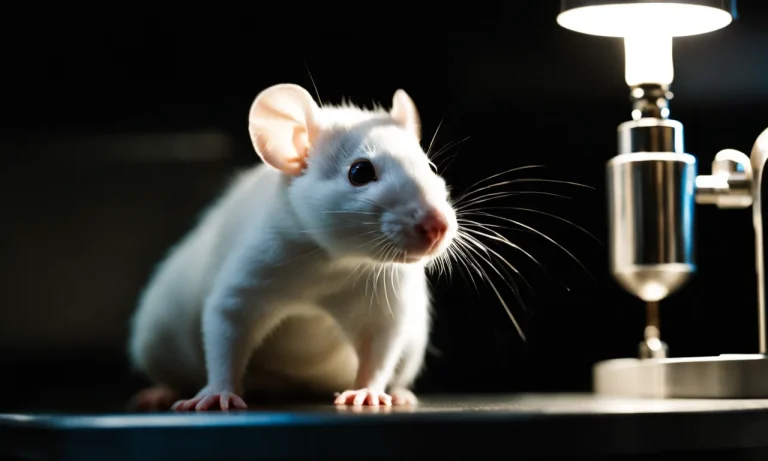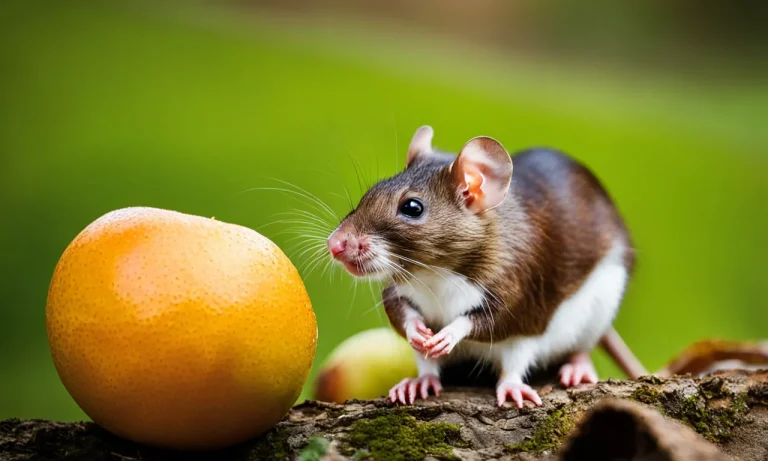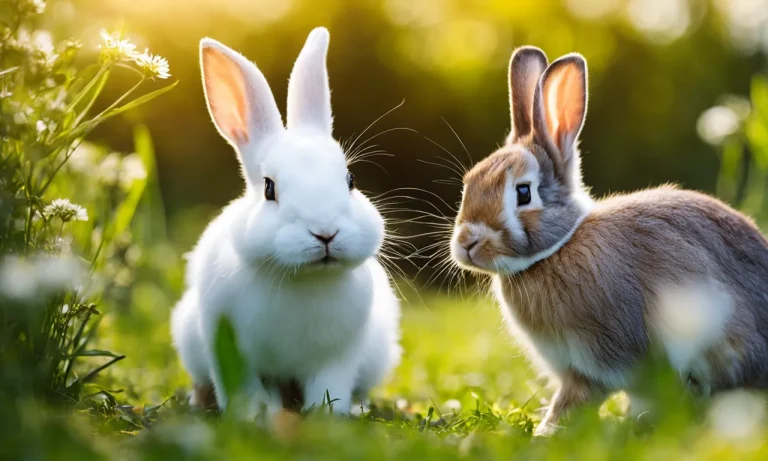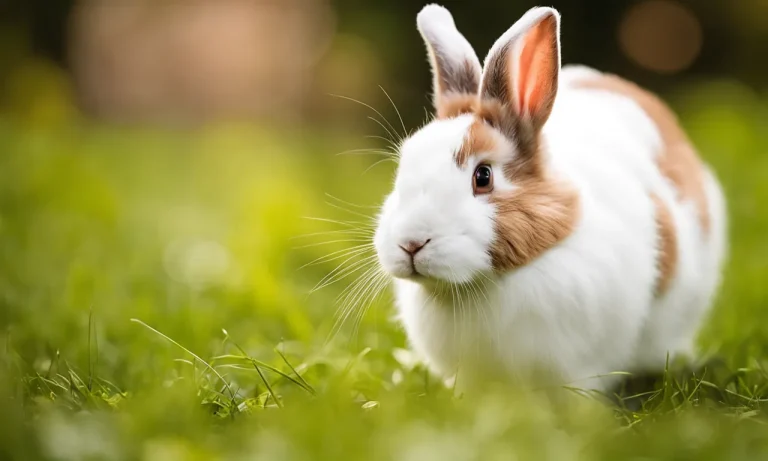With their small size, furry bodies, and beady little eyes, it’s easy to mistake guinea pigs for rodents like rats and mice. If you’re short on time, here’s a quick answer to your question: No, guinea pigs are not actually rats. They may look similar, but they belong to different scientific families.
Guinea pigs are a domesticated species of rodent belonging to the Caviidae family, while rats belong to the Muridae family. In this article, we’ll take an in-depth look at what exactly guinea pigs are, how they differ from rats, and clear up any confusion about whether guinea pigs are just a kind of rat.
Guinea Pigs are Rodents but Not Rats
Many people often confuse guinea pigs with rats due to their similar appearance and small size. However, it is important to note that guinea pigs are indeed rodents, but they belong to a different family than rats.
Guinea Pigs are Caviidae, Rats are Muridae
Guinea pigs, scientifically known as Cavia porcellus, belong to the family Caviidae. This family includes other small herbivorous mammals such as cavies and maras. On the other hand, rats, scientifically known as Rattus, belong to the family Muridae, which includes other rodents like mice and voles.
While guinea pigs and rats share some similarities, such as their small size and rodent classification, they have distinct differences that set them apart.
Key Differences in Appearance and Behavior
One noticeable difference between guinea pigs and rats is their physical appearance. Guinea pigs have a rounder body shape with shorter legs, while rats have a more elongated body with longer legs. Additionally, guinea pigs have short, rounded ears and a squat snout, while rats have larger ears and a pointed snout.
In terms of behavior, guinea pigs are known for their social nature and are often kept as pets for their friendly and interactive personalities. They enjoy being handled and are typically docile and gentle creatures. On the other hand, rats are known for their agility and intelligence.
They are highly adaptable and are often used in laboratory settings for research purposes.
Different Origins and Evolutionary History
Guinea pigs and rats also have different origins and evolutionary histories. Guinea pigs are native to South America and are believed to have been domesticated by the indigenous people of the Andes region over 3,000 years ago.
In contrast, rats are believed to have originated in Asia and later spread to other parts of the world through human activities.
It is important to note that while guinea pigs and rats may share some physical and behavioral traits, they are distinct species with unique characteristics. Understanding these differences can help dispel any misconceptions and ensure the proper care and identification of these animals.
Guinea Pig Species and Breeds
Guinea pigs, also known as cavies, are adorable and sociable pets that have been domesticated for centuries. While they may resemble rats in some ways, they are not the same species. Guinea pigs belong to the family Caviidae, while rats belong to the family Muridae.
Let’s explore the different species and breeds of guinea pigs.
Common Guinea Pig Breeds
There are several popular breeds of guinea pigs, each with its own unique characteristics. The American Guinea Pig is the most common breed, known for its short hair and smooth coat. The Abyssinian Guinea Pig has a distinctive rosette coat, with hair sticking out in all directions.
The Peruvian Guinea Pig has long, silky hair that requires regular grooming.
Other popular breeds include the Teddy Guinea Pig, which has a dense and curly coat, and the Skinny Pig, which is mostly hairless. Each breed has its own charm, and it’s important to choose one that suits your preferences and lifestyle.
Wild Cavy Species
Guinea pigs are believed to have originated from wild cavies found in South America. The two wild cavy species that are closely related to guinea pigs are the Montane Guinea Pig and the Brazilian Guinea Pig.
These wild cavies have adapted to various habitats, including grasslands, forests, and mountains.
The Montane Guinea Pig, also known as the Cavia tschudii, is found in the Andean region of South America. They are known for their ability to live in high altitudes and have longer limbs compared to domestic guinea pigs.
On the other hand, the Brazilian Guinea Pig, scientifically known as Cavia aperea, is found in the grasslands of Brazil and neighboring countries.
Guinea Pigs are Domesticated Cavies
Contrary to popular belief, guinea pigs are not rats or rodents. They are domesticated cavies, which means they have been selectively bred for specific traits over generations. Domestic guinea pigs have a docile and friendly temperament, making them popular pets around the world.
Guinea pigs are social animals and thrive in the company of their human caregivers. They are known for their vocalizations, including squeaks, purrs, and chirps, which they use to communicate with each other and their owners.
Guinea pigs are also known for their intelligence and can be trained to perform tricks and respond to commands.
Understanding the different species and breeds of guinea pigs can help you make an informed decision when choosing a pet. Whether you prefer a short-haired American Guinea Pig or a fluffy Peruvian Guinea Pig, these adorable creatures are sure to bring joy and companionship to your life.
Guinea Pig Care Basics
Housing Requirements
Providing a suitable living environment is key to ensuring the health and well-being of your guinea pig. Guinea pigs need a spacious cage that allows them to move around freely. A minimum cage size for one guinea pig is about 7.5 square feet, but larger is always better.
The cage should have a solid bottom to prevent foot injuries and be lined with bedding materials such as hay or paper-based bedding. It’s important to clean the cage regularly to maintain hygiene and prevent the buildup of odor.
Guinea pigs also require a safe and quiet space to retreat to when they want to rest or feel stressed. Consider providing them with a hideout or a small shelter within their cage. This will give them a sense of security and help them feel more comfortable in their environment.
Diet and Nutrition
A balanced diet is essential for the health of your guinea pig. The majority of their diet should consist of fresh hay, which provides essential fiber for proper digestion. Pellets specifically formulated for guinea pigs can also be given in moderation.
Additionally, guinea pigs need a variety of fresh vegetables and fruits to ensure they receive all the necessary vitamins and minerals.
It’s important to introduce new foods slowly and monitor your guinea pig’s reaction. Some foods, such as lettuce and cabbage, can cause digestive issues and should be given sparingly. Fresh water should always be available, and the water bottle or bowl should be cleaned regularly to prevent bacterial growth.
Grooming and Hygiene
Guinea pigs are generally clean animals, but they still require regular grooming to keep their coat and nails in good condition. Brushing their fur with a soft brush or comb can help remove loose hair and prevent matting.
Long-haired guinea pigs may need more frequent grooming to prevent their fur from becoming tangled.
Trimming your guinea pig’s nails is also important to prevent overgrowth, which can cause discomfort and difficulty walking. If you’re unsure how to do this, it’s best to consult a veterinarian or a professional groomer for guidance.
Vet Care Essentials
Regular veterinary check-ups are crucial for maintaining your guinea pig’s health. A veterinarian who specializes in exotic pets can provide the necessary vaccinations, perform health screenings, and offer advice on proper care.
It’s recommended to schedule a yearly check-up to ensure your guinea pig is in good health and catch any potential issues early.
In case of any signs of illness or injury, it’s important to seek veterinary care promptly. Guinea pigs are prone to certain health conditions, such as respiratory infections and dental problems, so being vigilant and proactive about their healthcare is essential.
Remember, providing proper care and attention to your guinea pig will contribute to their overall happiness and well-being. By following these basic care guidelines, you can ensure that your furry friend leads a happy and healthy life.
The Truth About Rats
While guinea pigs may be commonly mistaken for rats, they are actually two distinct species with significant differences in appearance, behavior, and habitat requirements. Let’s dive into the truth about rats and explore their unique characteristics.
Common Pet Rat Species
There are several common pet rat species that are popular among rodent enthusiasts. The most well-known species include the Norway Rat (Rattus norvegicus) and the Fancy Rat (Rattus norvegicus domestica).
These domesticated rats are different from their wild counterparts and have been selectively bred for desirable traits such as docility and friendliness.
Unlike guinea pigs, rats have a long history of living alongside humans as pets. They are highly social animals and thrive on human interaction. Rats are intelligent creatures that can be trained to perform tricks and even respond to their names.
Appearance, Behavior, Intelligence
Rats have distinct physical features that set them apart from guinea pigs. They typically have pointed snouts, large ears, and long, hairless tails. Their fur can come in various colors and patterns, making them visually striking pets.
In terms of behavior, rats are known for their curiosity and playful nature. They are active animals that require mental and physical stimulation to stay happy and healthy. Rats are excellent climbers and love exploring their surroundings.
They enjoy spending time with their human companions and can develop strong bonds with them.
Rats are also highly intelligent animals. They have been the subject of many scientific studies due to their problem-solving abilities and memory retention. Rats can learn complex tasks and can even recognize and remember specific individuals.
Ideal Habitat and Care
Providing the right habitat and care for pet rats is essential to ensure their well-being. Rats require a spacious cage with multiple levels and platforms for climbing. They should have plenty of toys, tunnels, and hiding spots to keep them mentally stimulated.
Rats are social animals and should ideally be kept in same-sex pairs or small groups. They thrive on companionship and can become lonely if kept alone. Regular social interaction and playtime with their human caregivers are important for their overall happiness.
When it comes to nutrition, rats have specific dietary needs. They require a balanced diet that includes a combination of commercial rat pellets, fresh fruits and vegetables, and occasional treats. It’s important to provide them with clean, fresh water at all times.
Proper hygiene is also crucial for maintaining a healthy rat habitat. Regular cage cleaning, including changing bedding and removing waste, is necessary to prevent odor buildup and maintain a clean living environment for your pet rats.
For more information on rat care and behavior, you can visit reputable websites such as Rat Guide or RSPCA.
Conclusion
While guinea pigs may look like tiny rats at first glance, they are distinctly different animals belonging to separate rodent families. Guinea pigs are domesticated cavies, not murid rats. With proper housing, diet, healthcare, and handling, guinea pigs can make fun, interactive pets.
Rats also have potential as pets but have different care needs as murid rodents. Hopefully this article has cleared up any confusion about guinea pigs’ relation to rats. They may be small furry rodents, but guinea pigs certainly aren’t rats!






